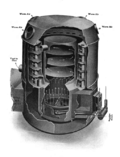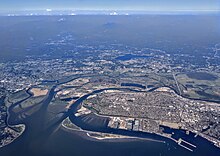As the winter chill sets in, a gas furnace becomes an indispensable ally in the battle against the cold. Get ahold of All-Ways Heating & A/C for quality gas furnace repair in Everett. It hums along quietly and efficiently, keeping our homes warm and comfortable. capacitor replacement However, like all mechanical systems, a gas furnace can encounter issues that disrupt its smooth operation. Troubleshooting common gas furnace problems doesn't always require professional intervention. With a little know-how and precautionary measures, many of these issues can be addressed by homeowners themselves.
Firstly, it is important to recognize the signs of trouble. exhaust flue checking Some common indicators include the furnace not producing heat at all, producing insufficient heat, frequent cycling between on and off states, or emitting strange noises during operation.
Troubleshooting Common Gas Furnace Issues: A Guide - exhaust flue checking
- gas furnace maintenance
- capacitor replacement
If your furnace isn’t producing heat at all, there could be several culprits to blame. The first step should be to check if the thermostat is set correctly — sometimes it's as straightforward as adjusting the temperature settings or switching from cooling to heating mode. If this isn't the issue, then inspect whether the circuit breaker has tripped or a fuse has blown; restoring power might solve your problem.
In cases where the furnace produces some heat but not enough, it's reasonable to start by checking your air filters. Dirty filters restrict airflow and significantly reduce efficiency; replacing them can swiftly resolve this issue. Additionally, ensure that all registers in your home are open and unblocked by furniture or curtains to allow for full circulation of heated air.
Frequent cycling could indicate a misadjusted thermostat or a clogged filter. After checking these two possibilities, you may also want to look at the airflow through your system and ensure nothing is blocking vents or ductwork.
Strange noises such as rattles or squeaks typically point toward mechanical problems. Loose panels might cause rattling noises which are relatively easy to fix by tightening screws. Squeaking or grinding sounds may suggest that there's an issue with one of the blower motors or bearings which often requires more technical expertise and potentially professional assistance.
Another common issue with gas furnaces is a faulty ignition system which can prevent your unit from firing up altogether. limit switch testing Modern furnaces use electronic ignitions which are more reliable than older pilot-light systems but can still malfunction due to dirt buildup or component failure.
Safety must be paramount when troubleshooting gas appliances because they involve combustible fuel sources that present risk of fire or carbon monoxide poisoning if mishandled. pilot light adjustment Before attempting any repairs beyond basic checks like thermostats and filters make sure you understand what you're doing - when in doubt always call in certified professionals who have both experience and equipment necessary for safe repair work on gas appliances.
It’s also wise to maintain regular maintenance schedules for your furnace even when no problems seem apparent - annual inspections by professionals can identify potential issues before they become serious problems ensuring longevity performance reliability system while keeping energy costs down due safety hazards minimum.
In conclusion troubleshooting common gas furnace issues requires patience attention detail some DIY skills however remember limit yourself simple tasks unless confident about understanding workings appliance Always prioritize safety consult expert help whenever feel out depth Regular maintenance key keeping heating running smoothly throughout coldest months year so don’t neglect annual check-ups keep cozy secure winter long! gas furnace maintenance










